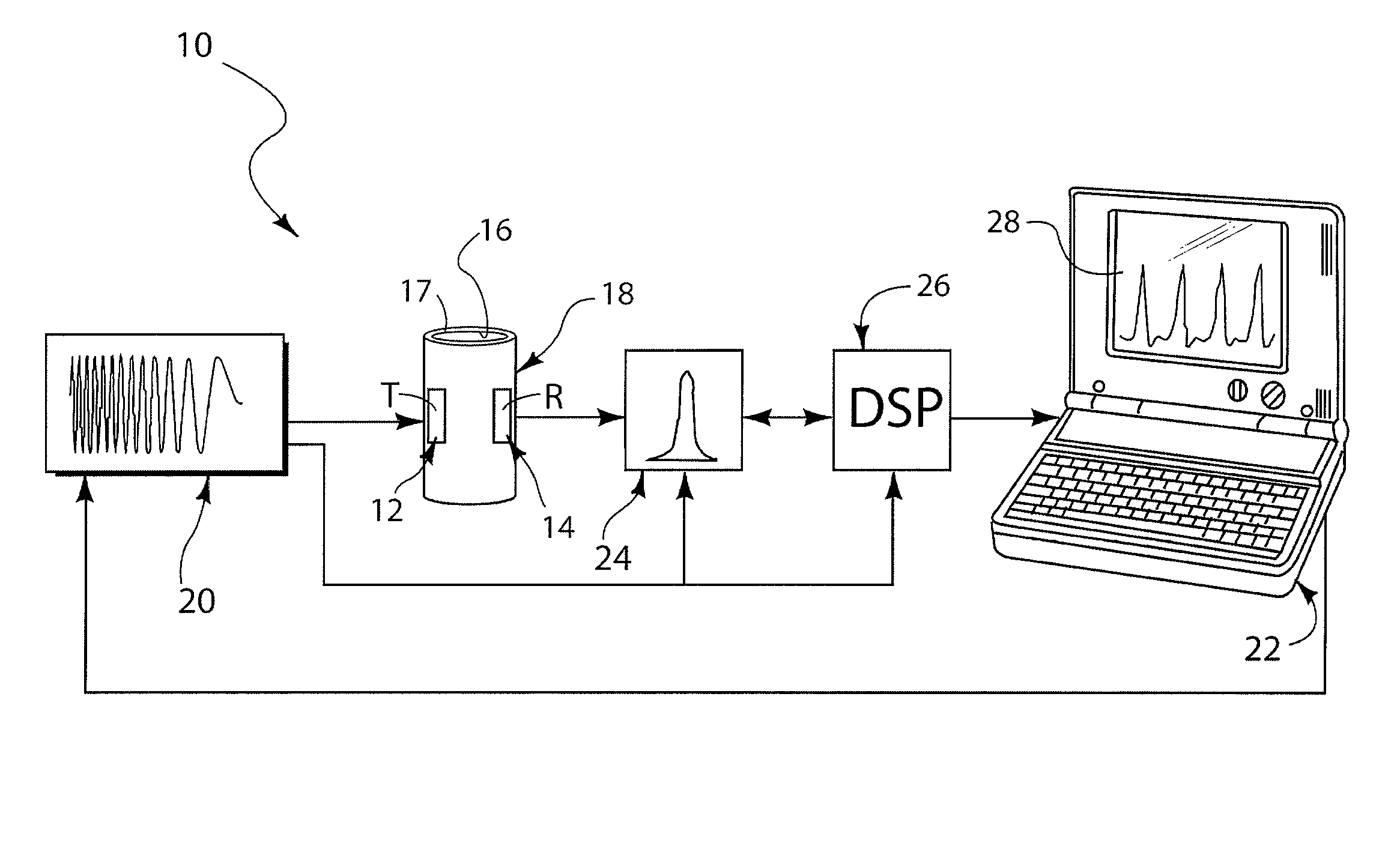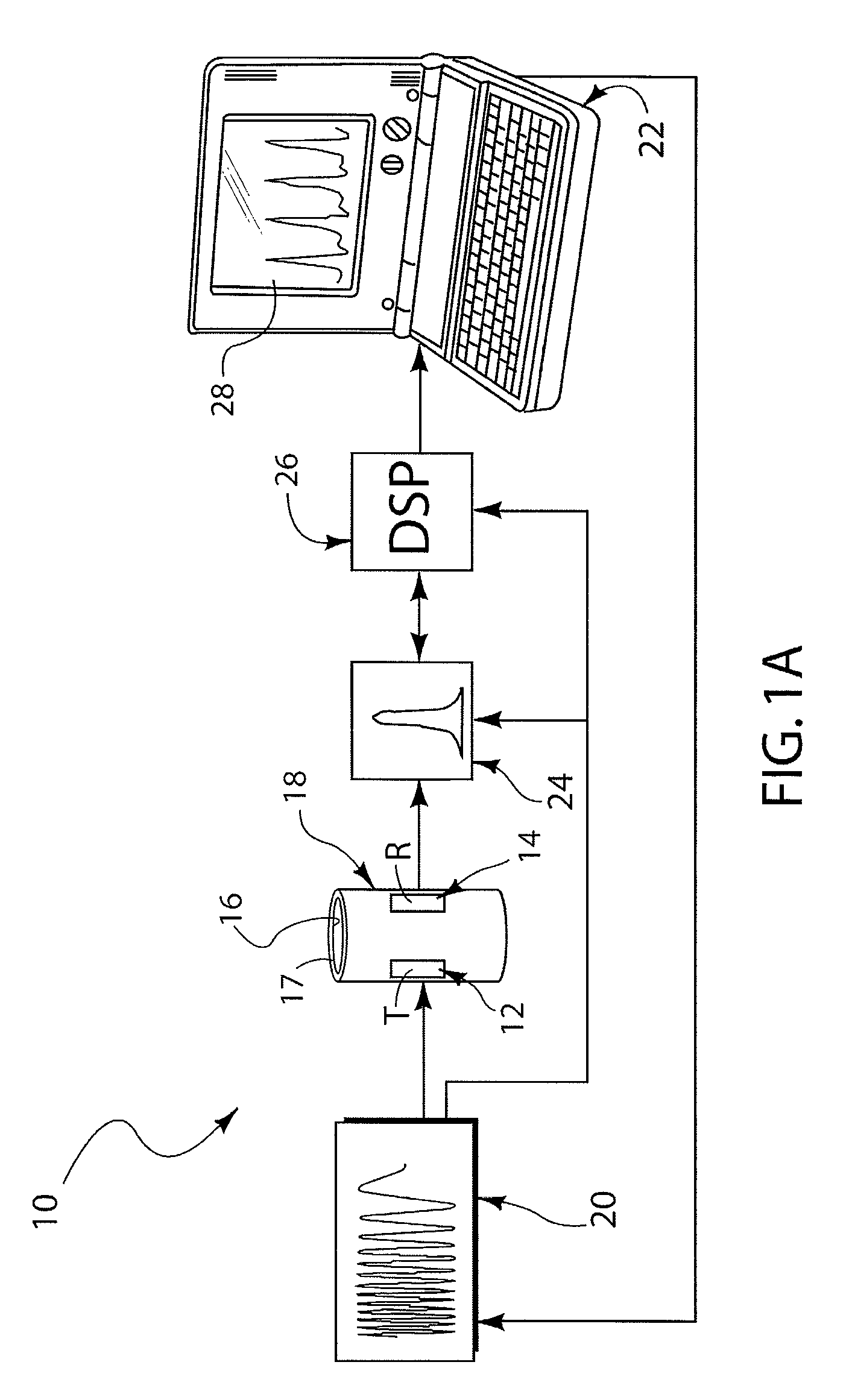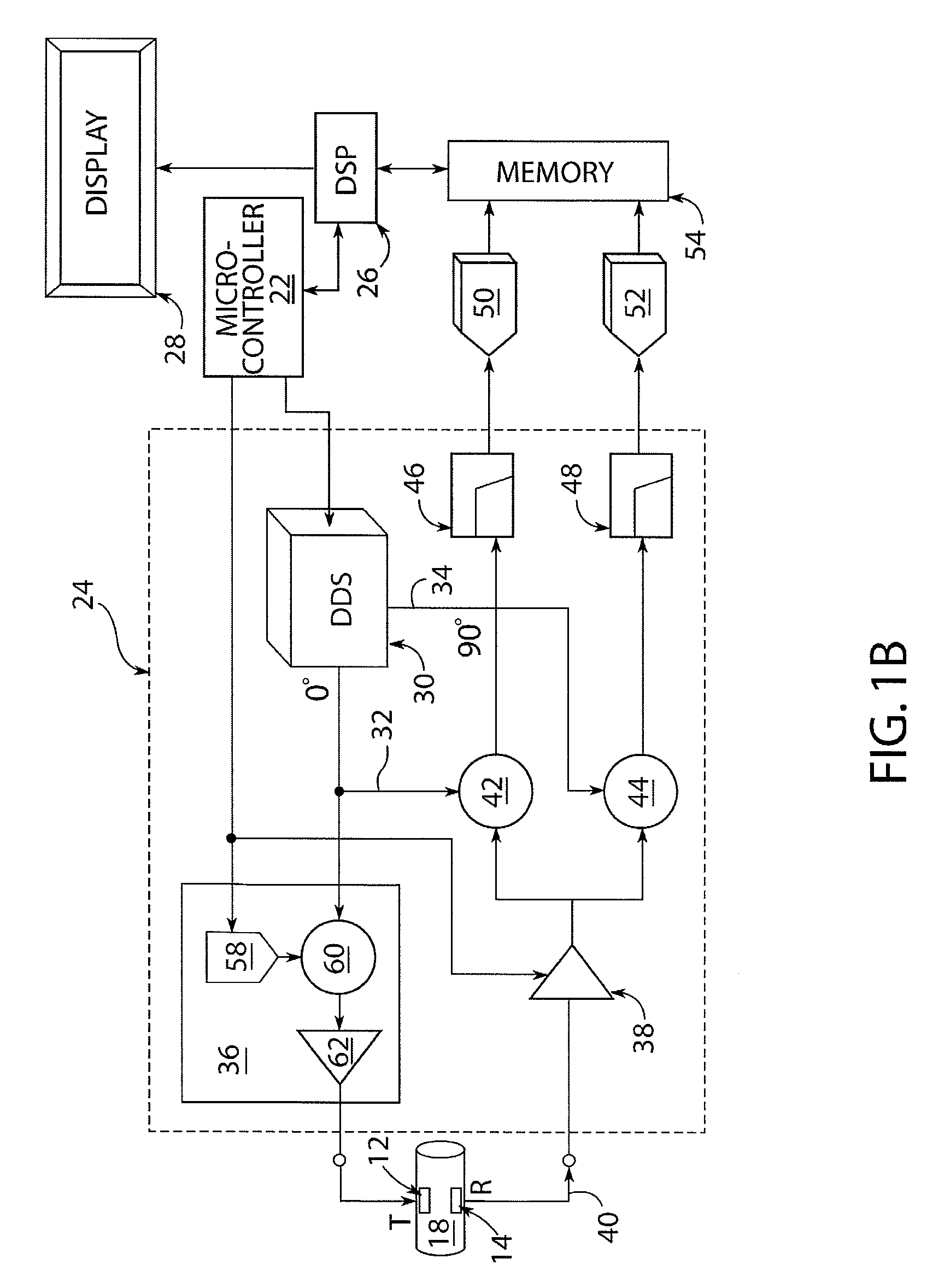Non-contact feature detection using ultrasonic Lamb waves
a technology of ultrasonic lamb waves and feature detection, applied in the direction of instruments, heat measurement, specific gravity measurement, etc., can solve the problems of poor work efficiency of existing techniques, gross defects in pipes, and visual inspection using cameras providing little information concerning the integrity of the pipeline, and achieve the effect of low power consumption of the transducer
- Summary
- Abstract
- Description
- Claims
- Application Information
AI Technical Summary
Benefits of technology
Problems solved by technology
Method used
Image
Examples
example 1
[0052]FIG. 4A is a graph of amplitude as a function of frequency for transducers disposed at a longitudinal location that is approximately in line with the location of a defect in the exterior of the wall of the cylinder, whereas the transducers are located interior thereto, while FIG. 4B is a graph of the amplitude as a function of frequency for internal transducers disposed away from the location of the defect, the presence of the defect along the path of the circulating Lamb waves generating standing waves which are not observed when the transducers are away from this location.
example 2
[0053]FIG. 5 shows graphs of amplitude as a function of time for transducers spaced approximately 180° apart in the plane of the defect (each transducer disposed about 90° along the inner surface of the pipe with respect to the defect defining the 0° position of the cylinder), with FIG. 5A showing the FFT amplitude as a function of time, taken about 2 in. away along the longitudinal axis of the cylinder from the defect location, FIG. 5B showing the FFT amplitude as a function of time for a cylinder rotation of 20° with the transducers held in a fixed location in the plane of the defect, and FIG. 5C is a graph of the FFT as a function of time for a cylindrical rotation of 40°, again in the plane of the defect, the latter two rotations generating an additional peak at between 200 and 300 μs which changes position as the cylinder is rotated about its longitudinal axis of symmetry.
example 3
[0054]FIG. 6 is a graph of amplitude as a function of time showing measurement repeatability with respect to rotation of the pipe around stationary transducers between 180° and 240° and further than 3 in. away from the defect having a depth of 20%, and indicates that the pipe wall is homogeneous.
PUM
| Property | Measurement | Unit |
|---|---|---|
| angle | aaaaa | aaaaa |
| angle | aaaaa | aaaaa |
| distance | aaaaa | aaaaa |
Abstract
Description
Claims
Application Information
 Login to View More
Login to View More - R&D
- Intellectual Property
- Life Sciences
- Materials
- Tech Scout
- Unparalleled Data Quality
- Higher Quality Content
- 60% Fewer Hallucinations
Browse by: Latest US Patents, China's latest patents, Technical Efficacy Thesaurus, Application Domain, Technology Topic, Popular Technical Reports.
© 2025 PatSnap. All rights reserved.Legal|Privacy policy|Modern Slavery Act Transparency Statement|Sitemap|About US| Contact US: help@patsnap.com



